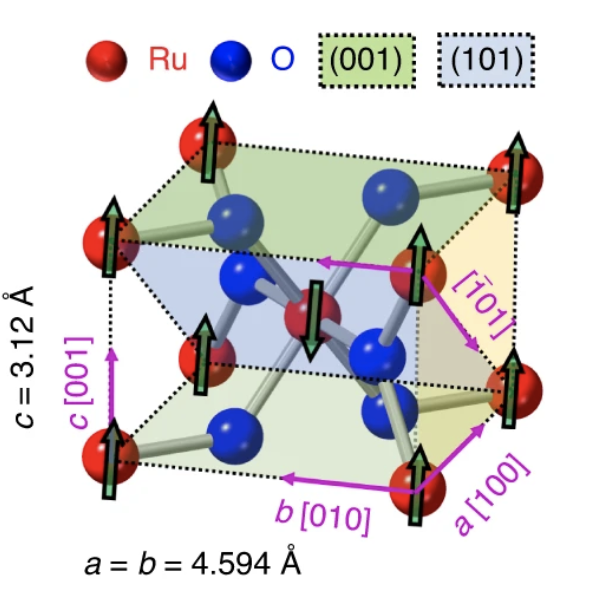PARADIM Study Reveals New Mechanism for Switching Magnetization
cornell.edu

Crystal structure of SrRuO₃ showing how orientation affects magnetic behavior. Image courtesy of PARADIM/Cornell University.
By PARADIM News
Researchers at Cornell, supported by PARADIM, have discovered that switching the orientation of a thin film of the ferromagnet SrRuO₃ can control its magnetization through a symmetry-dependent effect called spin-orbit torque. This finding, published in Nature Materials, demonstrates how the crystal orientation of a material can influence the direction and efficiency of spin current flow.
The work opens new possibilities for developing low-power magnetic memory devices by eliminating the need for external magnetic fields. “It’s the same material, but when you grow it in a different orientation, the symmetry changes how the spins behave,” said lead author John Wright.